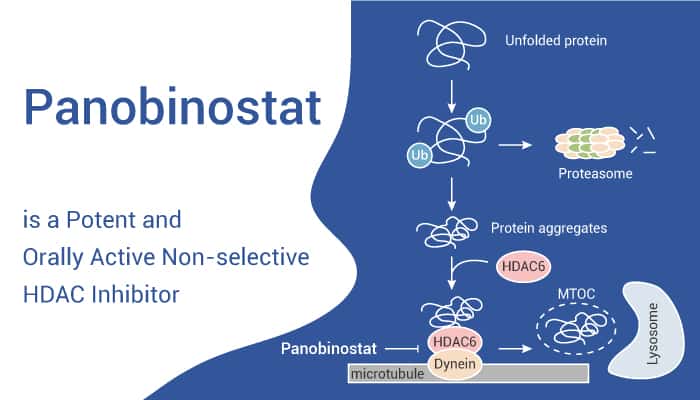HDACs (Histone deacetylases) are a class of enzymes that remove acetyl groups from an ε-N-acetyl lysine amino acid on a histone, allowing the histones to wrap the DNA more tightly. This is important because acetylation and de-acetylation can regulate DNA expression. Acetylation is controlled by two antagonistic enzyme families: HATs and HDACs. HDACs play an important role in vital chromosomal translocation-mediated oncogenic protein fusion and carcinogenic events. HDACs play an important role in major biological functions such as transcription, metastasis, autophagy, cell cycle, DNA damage repair, angiogenesis, stress responses, and senescence.
There are 18 human HDACs in four classes. Class I HDACs include HDAC1, -2, -3, and -8. And class II HDACs include two subgroups: class IIa and class IIb. Class IIa includes HDAC4, -5, -7, and -9, and class IIb includes HDAC6 and -10. Class III, also known as the sirtuins (SIRTs), includes SIRT1-7, and class IV contains only HDAC11. Importantly, Class I and II HDACs are general oncoproteins that interact with substrates and regulate gene expression to promote tumorigenesis and cancer development either individually or alongside co-repressors. Paradoxically, SIRTs can serve as both oncoproteins and tumor suppressors. In the 1970s, researchers found that sodium butyrate can transform red leukemia cells into normal cells, and resynthesize hemoglobin. This process was accompanied by strong histone hyperacetylation and resulted in the discovery of the first HDACi.
Panobinostat (LBH589) is a potent and orally active pan-HDAC inhibitor.

Panobinostat inhibits multiple histone deacetylase enzymes, a mechanism leading to apoptosis of malignant cells via multiple pathways. In a Mayo Clinic study, Panobinostat synergistically acts with sirolimus to kill pancreatic cancer cells. What’s more, Panobinostat is used in combination with the anti-cancer drug bortezomib and the corticoid dexamethasone for the treatment of multiple myeloma. Meanwhile, Panobinostat also significantly increases in vitro the survival of motor neuron (SMN) protein levels in cells of patients with spinal muscular atrophy. Panobinostat induces HIV-1 virus production even at low concentrations, and stimulates HIV-1 expression in latently infected cells.
All in all, Panobinostat is a potent and orally active non-selective HDAC inhibitor, with antineoplastic activities.
Reference:
Li G, et, al. Front Cell Dev Biol. 2020 Sep 29;8:576946.